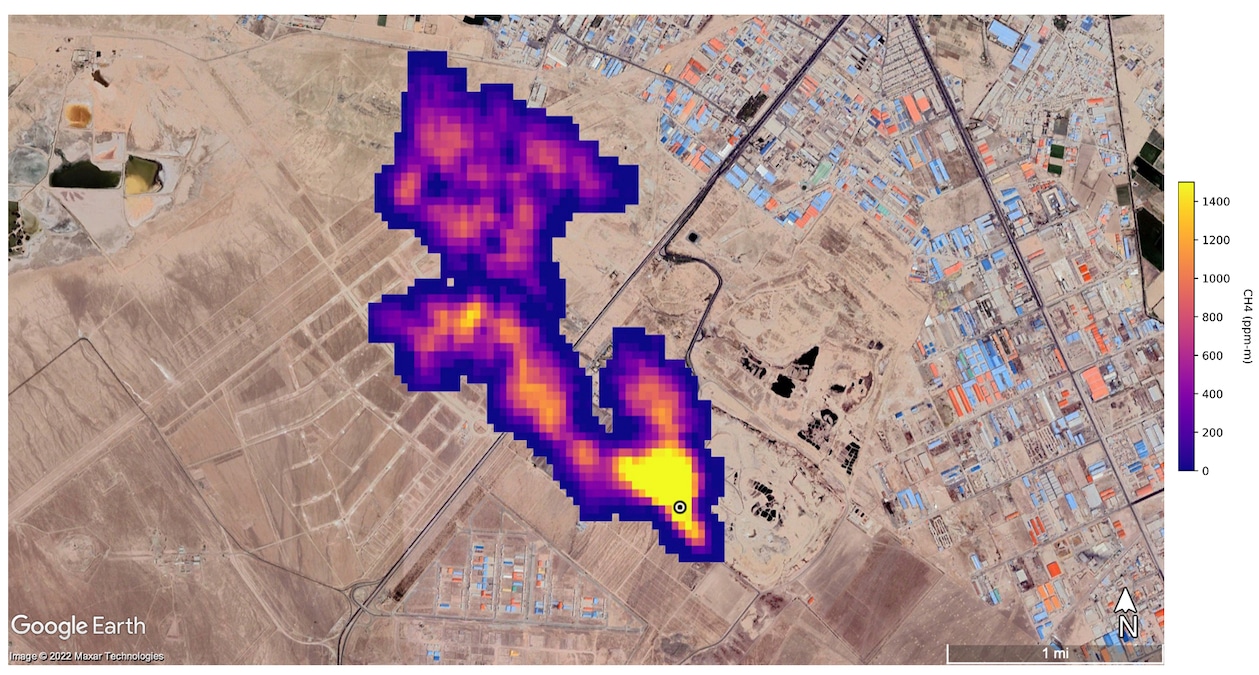Where Are the Methane ‘Super-Emitters’? NASA Identifies More Than 50 Major Methane Leaks From Space

 Why you can trust us
Why you can trust us
Founded in 2005 as an Ohio-based environmental newspaper, EcoWatch is a digital platform dedicated to publishing quality, science-based content on environmental issues, causes, and solutions.
There is 262 percent more methane in the atmosphere now than there was before the start of the industrial revolution, but where is all that methane coming from?
NASA’s Earth Surface Mineral Dust Source Investigation (EMIT) has enabled the agency to map more than 50 methane “super-emitters” from space.
“Some of the plumes EMIT detected are among the largest ever seen — unlike anything that has ever been observed from space,” NASA’s Jet Propulsion Laboratory (JPL) research technologist Andrew Thorpe said in a Tuesday press release. “What we’ve found in just a short time already exceeds our expectations.”
EMIT wasn’t actually designed with methane in mind. Instead, its main purpose is to map certain minerals in deserts that generate dust in order to help scientists understand the impact of dust on climate. It does this with an imaging spectrometer that identifies the chemical signatures of various minerals.
“It turns out that methane also has a spectral signature in the same wavelength range, and that’s what has allowed us to be sensitive to methane,” EMIT principal investigator Robert Green of JPL said during a press conference reported by Scientific American.
EMIT was installed on the International Space Station in July. From there, it circles the Earth every 90 minutes, Reuters reported. It has a view from around 250 miles above the Earth’s surface but can zoom in to view a soccer-field’s worth of space. From these heights, it has been able to identify more than 50 methane “super-emitters” over the past three months at locations in Central Asia, the Middle East and the Southwestern United States, NASA said.
These include:
- Southeast of Carlsbad, New Mexico: A methane plume around two miles long was detected in the Permian Basin, which is the largest oil field in the world and stretches between southeastern New Mexico and western Texas. It flowed at a rate of 40,300 pounds per hour.
- South of Tehran, Iran: A three-mile plume was detected from a landfill. It flowed at a rate of 18,700 pounds per hour.
- East of Hazar, Turkmenistan: Twelve plumes were detected from oil and gas infrastructure near the Caspian Sea port city, some of which extended more than 20 miles. They flowed at a rate of 111,000 pounds per hour, which is similar to the rate of the 2015 Aliso Canyon gas leak near Los Angeles and one of the U.S.’s biggest-ever methane releases.
Identifying these super-emitters is helpful because methane is a potent greenhouse gas — around 80-times more heat-trapping than carbon dioxide over 20 years. But it also lasts in the atmosphere for a much shorter time — only around 10 years. Therefore, identifying and plugging methane leaks can have a more instantaneous impact on the climate.
“Reining in methane emissions is key to limiting global warming. This exciting new development will not only help researchers better pinpoint where methane leaks are coming from, but also provide insight on how they can be addressed — quickly,” NASA Administrator Bill Nelson said in the press release. “The International Space Station and NASA’s more than two dozen satellites and instruments in space have long been invaluable in determining changes to the Earth’s climate. EMIT is proving to be a critical tool in our toolbox to measure this potent greenhouse gas — and stop it at the source.”
EMIT found these leaks at just the start of its mission as researchers were just testing it out and learning its capabilities, Scientific American noted. They therefore predict it will become even more useful at identifying methane leaks.
“We are really only scratching the surface of EMIT’s potential for mapping greenhouse gases,” Thorpe said during the press conference reported by Scientific American. “We’re really excited about EMIT’s potential for reducing emissions from human activity by pinpointing these emission sources.”
Subscribe to get exclusive updates in our daily newsletter!
By signing up, you agree to the Terms of Use and Privacy Policy & to receive electronic communications from EcoWatch Media Group, which may include marketing promotions, advertisements and sponsored content.

 233k
233k  41k
41k  Subscribe
Subscribe 




